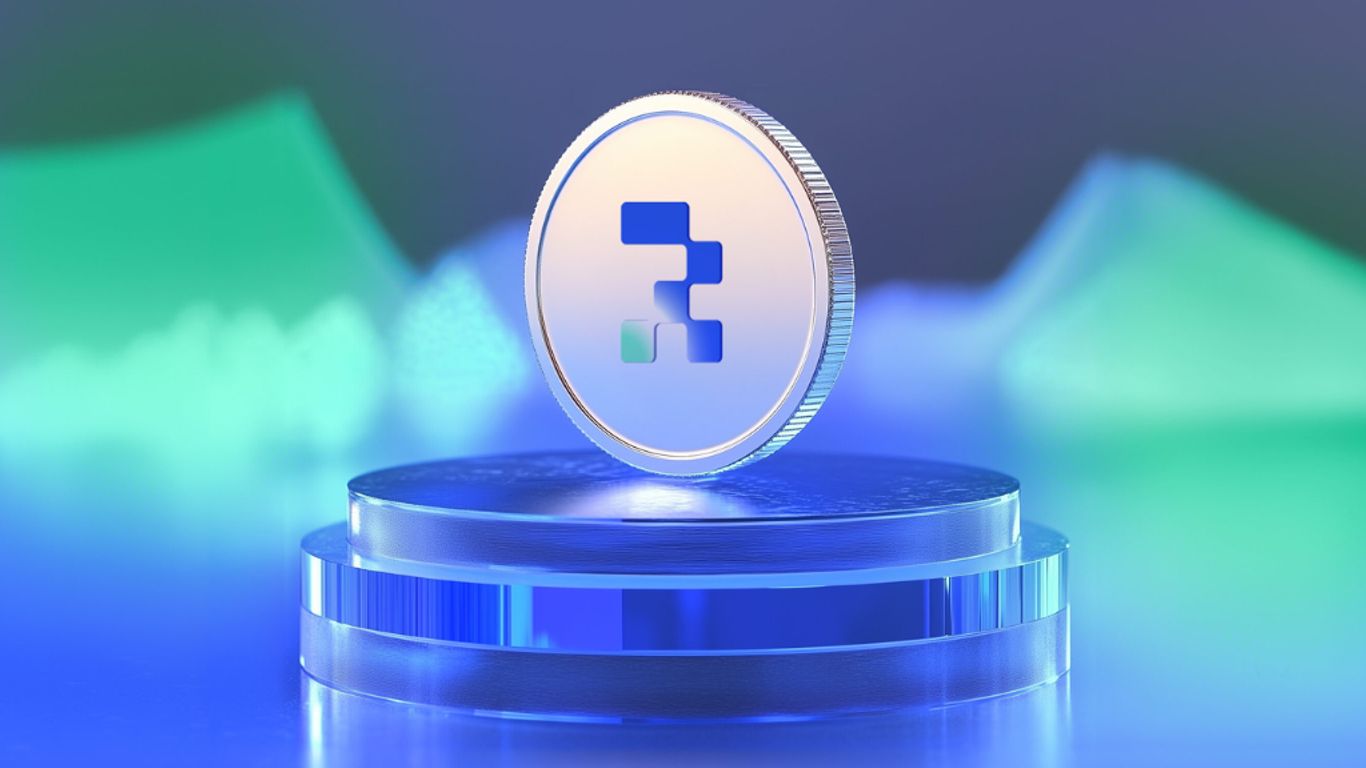In today's world, blockchain technology is changing how we think about ownership and investment. One crucial aspect of this transformation is blockchain interoperability, which allows different blockchain networks to work together. This article explores the importance of blockchain interoperability in tokenization, highlighting its benefits and challenges. Tokenization refers to converting real-world assets into digital tokens, making them easier to trade and manage. Understanding how these technologies interact is key to unlocking their full potential.
Key Takeaways
- Blockchain interoperability enables different networks to communicate, enhancing asset liquidity.
- Tokenization allows everyday investors to own fractions of high-value assets, making investments more accessible.
- Smart contracts automate transactions, reducing costs and improving efficiency.
- Standardized protocols are essential for seamless cross-chain transactions and greater market acceptance.
- Building trust and educating investors are crucial for the widespread adoption of tokenized assets.
Understanding Blockchain Interoperability in Tokenization
Defining Blockchain Interoperability
Blockchain interoperability refers to the ability of different blockchain networks to communicate and share information with each other. This is essential for the smooth transfer of assets across various platforms. Without interoperability, each blockchain operates in isolation, limiting the potential for collaboration and innovation.
Importance in Tokenization
Interoperability is crucial in the tokenization process because it allows for the seamless exchange of tokenized assets. Here are some key points:
- Enhanced Liquidity: Interoperable tokens can be traded across multiple platforms, increasing their market reach.
- Broader Market Access: Investors can access a wider range of assets, making tokenized investments more appealing.
- Improved User Experience: A unified system simplifies transactions, encouraging more users to participate in tokenized markets.
Challenges in Achieving Interoperability
Despite its importance, achieving interoperability faces several challenges:
- Diverse Technologies: Different blockchain platforms use various protocols, making communication difficult.
- Standardization Issues: The lack of common standards can lead to confusion and inefficiencies in transactions.
- Security Concerns: Ensuring secure transactions across different networks is a significant challenge.
Interoperability is not just a technical requirement; it is a fundamental aspect that can drive the wider adoption of tokenized assets. By overcoming these challenges, we can create a more integrated and efficient financial ecosystem.
Technological Barriers to Blockchain Interoperability
Scalability Issues
One of the main challenges in blockchain interoperability is scalability. As more users join different blockchain networks, the systems must handle a larger number of transactions. If they can't keep up, it can lead to slow processing times and frustrated users. Here are some key points:
- Increased Demand: More users mean more transactions.
- Network Congestion: High traffic can slow down the system.
- Resource Limitations: Some blockchains may not have enough resources to scale effectively.
Security Concerns
Security is another significant barrier. Different blockchains have various security measures, which can create vulnerabilities. Here are some concerns:
- Data Breaches: Insecure connections between blockchains can lead to data theft.
- Smart Contract Risks: Flaws in smart contracts can be exploited by hackers.
- Transaction Finality: Different blockchains have different rules about when a transaction is final, which can lead to confusion.
Integration Challenges
Integrating blockchain technology with existing systems can be complex and costly. Here are some integration hurdles:
- Compatibility Issues: Not all systems can easily connect with blockchain technology.
- Training Needs: Staff may need training to use new systems effectively.
- Cost of Transition: Upgrading systems can be expensive and time-consuming.
Overcoming these technological barriers is essential for the success of blockchain interoperability. By addressing scalability, security, and integration challenges, we can create a more connected and efficient blockchain ecosystem.
Standardization Efforts in Blockchain Interoperability
Role of Token Taxonomy Initiative
The Token Taxonomy Initiative (TTI) is working to create a common framework for tokenized assets. This effort is essential for ensuring that different blockchain systems can communicate effectively. By establishing a set of standards, TTI aims to promote interoperability across various platforms, making it easier for assets to be traded and managed.
Common Protocols and Standards
Standard protocols are crucial for the success of tokenization. Here are some key points:
- Common Standards: Developing shared rules helps different platforms work together.
- Broader Market Reach: Interoperable tokens can be traded across various platforms, increasing their appeal.
- Enhanced User Experience: A seamless experience across platforms encourages more users to participate in tokenized markets.
Impact on Market Liquidity
Achieving interoperability and standardization offers numerous benefits:
- Enhanced Liquidity: Interoperable systems allow for easier trading and transfer of assets, increasing market liquidity.
- Reduced Costs: Standardized processes can lower transaction costs by eliminating the need for intermediaries.
- Increased Trust: A common framework can build trust among investors and regulators, fostering a more robust market.
Interoperability and standardization are key to unlocking the full potential of tokenized assets, making them more accessible and efficient for all market participants.
The Role of Smart Contracts in Tokenization
Smart contracts are a vital part of asset tokenization. They are self-executing agreements where the terms are written directly into code. This means they can automatically enforce rules without needing a middleman, making transactions faster and cheaper. Smart contracts help automate many processes, which is essential for efficient tokenization.
Automating Transactions
- Smart contracts can handle various tasks automatically, such as:
- Issuing tokens when specific conditions are met.
- Transferring ownership of assets without delays.
- Executing payments based on predefined rules.
Reducing Intermediaries
- By using smart contracts, the need for intermediaries is greatly reduced. This leads to:
- Lower costs for all parties involved.
- Faster transaction times since there are fewer steps.
- Increased efficiency in managing assets.
Ensuring Compliance
- Smart contracts can be programmed to follow legal rules and regulations. This means they can automatically check if all legal requirements are met before a transaction goes through. This feature helps protect both buyers and sellers, ensuring that everyone follows the rules.
Smart contracts are revolutionizing how we manage and trade assets, making transactions safer and more efficient.
In summary, smart contracts are crucial for the success of tokenized assets, providing automation, security, and trust in the digital ownership landscape.
Market Adoption and Liquidity in Tokenized Assets
For tokenization to truly change the way we trade and invest, it needs to be widely accepted by both investors and asset owners. Building trust in this technology is essential to attract a large user base. Additionally, having enough liquidity in the market for tokenized assets is crucial for smooth trading, which helps fulfill the promise of better market fluidity.
Building Trust Among Investors
- Education: Investors need to understand how tokenization works and its benefits.
- Demonstrating Success: Showcasing successful tokenization projects can help build confidence.
- Community Engagement: Involving users in discussions and feedback can enhance trust.
Ensuring Sufficient Liquidity
- Liquidity Pools: These are essential for providing the necessary liquidity for trading.
- Fractional Ownership: Allowing smaller investments can attract more participants.
- Marketplaces: Creating platforms where tokenized assets can be easily traded is vital.
Tokenization can increase liquidity by making traditionally illiquid assets, like real estate or art, more easily tradable. This can help unlock capital that would otherwise remain tied up in these assets.
Case Studies of Successful Blockchain Interoperability
Securitize and Blackrock Partnership
Securitize teamed up with Blackrock to launch the BUIDL fund, which experienced a dramatic increase in value from $40 million to $450 million within just two months. This case highlights the growing demand for tokenized fund products in the investment market.
HSBC Orion's Digital Green Bonds
HSBC Orion played a key role in the issuance of a digital green bond valued at over $760 million for the Hong Kong Monetary Authority. This initiative demonstrates how tokenization can facilitate sustainable investments and broaden market participation.
Maecenas and Tokenized Fine Art
Maecenas is a platform that allows users to buy, sell, or trade tokenized fine art. This innovation makes art investment more accessible, enabling multiple investors to own fractions of high-value pieces. By tokenizing art, Maecenas is transforming the art market, making it easier for everyone to invest.
Tokenization is reshaping how we interact with assets, making them more accessible and efficient for everyone.
In summary, these case studies illustrate how tokenization is transforming traditional investment landscapes, making them more inclusive and accessible for a wider range of investors.
Security Enhancements in Blockchain Interoperability
Cryptographic Techniques
Security is a major concern in blockchain interoperability. Innovative cryptographic techniques are essential for protecting sensitive data. These methods help ensure that only authorized users can access and trade tokenized assets. Here are some key techniques:
- Advanced encryption: Protects data from unauthorized access.
- Hash functions: Ensure data integrity by creating unique identifiers for transactions.
- Zero-knowledge proofs: Allow one party to prove to another that a statement is true without revealing any information beyond the validity of the statement.
Smart Contract Auditing
Regular audits of smart contracts are crucial for maintaining security. These audits help identify and fix vulnerabilities before they can be exploited. Here are some important points about smart contract auditing:
- Identifying weaknesses: Auditors look for flaws in the code that could be exploited.
- Ensuring compliance: Audits help ensure that contracts meet regulatory standards.
- Building trust: Regular audits increase confidence among users and investors.
Multi-Signature Wallets
Multi-signature wallets add an extra layer of security by requiring multiple approvals for transactions. This method helps prevent unauthorized access and ensures that only legitimate users can make transactions. Key benefits include:
- Increased security: Reduces the risk of single points of failure.
- Shared control: Multiple parties must agree before funds can be moved.
- Enhanced accountability: Keeps a clear record of who approved each transaction.
Security enhancements are vital for building trust in blockchain interoperability. As we continue to develop these technologies, we can create a safer environment for investors and users alike.
These enhancements not only protect assets but also promote a safer environment for investors, encouraging broader participation in the market. As tokenization continues to evolve, these security measures will play a crucial role in its success.
Regulatory Challenges and Opportunities
Global Regulatory Frameworks
The world of tokenization is influenced by various global regulatory frameworks. Different countries have their own rules, which can create confusion for businesses trying to comply. Here are some key points to consider:
- Diverse Regulations: Each country has its own rules regarding asset ownership and trading.
- Compliance Issues: Companies must ensure they follow all local laws to avoid legal problems.
- Unclear Guidelines: Sometimes, regulations are not clear, leading to confusion for businesses.
Compliance Challenges
Navigating the regulatory environment can be tricky. Here are some common challenges:
- Regulatory Uncertainty: Many regions lack clear guidelines, making it hard for issuers to comply.
- Cross-Border Issues: Different countries may have conflicting regulations, complicating international transactions.
- Security Risks: Ensuring the security of tokenized assets is vital to maintain investor trust.
Future Outlook
The future of regulation in the tokenization space looks promising:
- Clearer Guidelines: As tokenization becomes more common, clearer regulations are expected to emerge.
- Increased Investor Confidence: Better regulations can lead to more trust in tokenized assets.
- Global Cooperation: Countries may start to work together to create more uniform regulations.
Understanding the regulatory frameworks is vital for the successful implementation of tokenized assets. As these frameworks evolve, they will shape the future of tokenization and its acceptance in the market.
Key Opportunities
Despite the challenges, there are significant opportunities:
- Innovation: Regulatory challenges can lead to new solutions and technologies.
- Collaboration: Stakeholders can work together to create a more unified regulatory environment.
- Market Growth: Clear regulations can encourage more investors to participate in tokenized assets, boosting market growth.
In summary, while there are hurdles to overcome, the evolving regulatory landscape presents opportunities for innovation and collaboration in the tokenization space. Blockchain technology has the potential to revolutionize regulatory compliance by introducing transparency, efficiency, and automation.
Future of Blockchain Interoperability in Tokenization
Emerging Technologies
The future of blockchain interoperability in tokenization is bright, driven by innovative technologies. These advancements will help different blockchain systems communicate better, making it easier to trade tokenized assets across various platforms. Here are some key technologies to watch:
- Cross-chain protocols: These will allow seamless transactions between different blockchains.
- Layer-two solutions: These will enhance scalability, enabling faster and more efficient transactions.
- Smart contracts: These will automate processes, reducing the need for intermediaries.
Innovative Financial Products
As interoperability improves, we can expect to see a rise in new financial products. Tokenization will allow for:
- Fractional ownership: Investors can own a part of high-value assets, making investments more accessible.
- Tokenized debt instruments: This will open up new markets for borrowing and lending.
- Real-time asset tracking: Using IoT technology, assets can be monitored continuously, enhancing transparency.
Expanding Investment Opportunities
With better interoperability, the investment landscape will broaden significantly. More people will have access to diverse assets, leading to:
- Increased market participation from everyday investors.
- Enhanced liquidity, making it easier to buy and sell tokenized assets.
- A more inclusive financial ecosystem, where everyone can invest in previously inaccessible markets.
The future of blockchain interoperability in tokenization is not just about technology; it’s about creating a more inclusive and efficient financial landscape for everyone. Interoperability could significantly enhance blockchain scalability, overcoming one of the current limitations of the technology. This development paves the way for a more connected digital economy.
Cross-Chain Tokenization and Its Impact
Seamless Asset Transfers
Cross-chain tokenization allows for seamless asset transfers between different blockchain networks. This means that assets can move freely, enhancing their usability and value. By breaking down barriers, it enables:
- Increased liquidity: More investors can access various assets.
- Broader market reach: Assets can be traded across multiple platforms.
- Enhanced user experience: Users can manage their assets more easily.
Unified Token Standards
Having unified token standards is crucial for the success of cross-chain tokenization. It ensures that different blockchain systems can communicate effectively. Key benefits include:
- Simplified trading: Easier to buy and sell tokenized assets.
- Greater market participation: More stakeholders can engage in the market.
- Improved security: A common framework builds trust among users.
Collaborative Ecosystems
Cross-chain tokenization fosters collaborative ecosystems among various blockchain projects. This collaboration leads to:
- Innovation: Developers can create new applications that work across different networks.
- Shared resources: Projects can pool resources for better efficiency.
- Community growth: A more connected blockchain community encourages participation.
Cross-chain tokenization represents a pivotal advancement in the blockchain landscape, addressing one of the most significant challenges: interoperability. It not only enhances liquidity but also creates new opportunities for innovation across various sectors, from finance to gaming.
Enhancing User Experience Through Interoperability
Simplifying Cross-Chain Transactions
Cross-chain tokenization makes it easier for users to move their assets between different blockchain networks. This simplification allows users to access a wider range of services without the hassle of complicated processes. Here are some key benefits:
- Seamless Transfers: Users can transfer assets effortlessly across various platforms.
- Reduced Friction: The process becomes smoother, encouraging more participation in the market.
- Wider Access: Investors can engage with multiple blockchain ecosystems, enhancing their investment opportunities.
Improving Asset Management
Managing tokenized assets can be challenging, especially for those with large portfolios. Interoperability helps by:
- Centralized Management: Users can manage their assets from one platform, reducing confusion.
- Enhanced Security: Cross-chain security protocols work together to protect assets.
- Streamlined Processes: Automated systems make it easier to track and transfer ownership.
Creating New Financial Products
Interoperability opens doors to innovative financial products that were previously impossible. For example:
- Cross-Chain Loans: Users can take out loans using tokenized assets from different blockchains as collateral.
- Fractional Ownership: Investors can own smaller shares of high-value assets, making investments more accessible.
- Collaborative Ecosystems: Different blockchain projects can work together, leading to new solutions and opportunities.
Interoperability is crucial for making blockchain technology more user-friendly. By simplifying processes and enhancing security, it encourages broader adoption and engagement in the tokenization market.
In summary, enhancing user experience through interoperability is vital for the growth of tokenized assets. By simplifying transactions, improving asset management, and creating new financial products, we can make blockchain technology more accessible and appealing to a wider audience.
Conclusion
In summary, blockchain interoperability is essential for the success of tokenization. It allows different blockchain systems to work together, making it easier to trade and manage tokenized assets. This connection not only boosts market activity but also opens up new investment opportunities for everyone. As more people understand and trust tokenization, we can expect a more inclusive financial system where assets are accessible to all. By overcoming the challenges of interoperability, we can create a more efficient and secure environment for trading and investing in tokenized assets.
Frequently Asked Questions
What is blockchain interoperability?
Blockchain interoperability means different blockchain networks can work together and share information. This helps in moving assets easily between different platforms.
Why is interoperability important for tokenization?
Interoperability is important because it allows tokenized assets to be traded across various blockchain networks, making them more accessible and liquid.
What challenges does interoperability face?
Interoperability faces challenges like different standards among blockchains, security issues, and the complexity of integrating with existing systems.
How do smart contracts help in tokenization?
Smart contracts automate processes like payments and compliance checks, making transactions faster and reducing the need for middlemen.
What are the benefits of tokenizing assets?
Tokenizing assets makes them easier to trade, allows for fractional ownership, and increases market liquidity.
How can tokenization improve market liquidity?
Tokenization improves market liquidity by allowing assets to be traded more easily and in smaller amounts, attracting more investors.
What role do regulations play in tokenization?
Regulations are important because they help ensure that tokenized assets are compliant with laws, which builds trust among investors.
What is the future of blockchain interoperability?
The future looks bright as new technologies and standards are developed to enhance interoperability, making tokenized assets more accessible and efficient.




